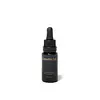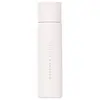What's inside
What's inside
 Key Ingredients
Key Ingredients

 Benefits
Benefits

 Concerns
Concerns

 Ingredients Side-by-side
Ingredients Side-by-side

Water
Skin ConditioningPentylene Glycol
Skin ConditioningSodium Cocoyl/Stearoyl (Alanine/Arginine/Asparagine/Aspartic Acid/Glutamic Acid/Glutamine/Glycine/Histidine/Isoleucine/Leucine/Lysine/Phenylalanine/Proline/Serine/Threonine/Tyrosine/Valine)
EmollientGlycerin
HumectantHedychium Coronarium Root Extract
MaskingTripeptide-1
Skin ConditioningPolygonum Aviculare Extract
EmollientHoney
HumectantNonapeptide-1
Skin ConditioningAcetyl Heptapeptide-4
HumectantPhytosphingosine
Skin ConditioningSea Whip Extract
Skin ConditioningNiacinamide
SmoothingHydrolyzed Hyaluronic Acid
HumectantAminobutyric Acid
Adenosine
Skin ConditioningThioctic Acid
AntioxidantGlycolic Acid
BufferingBacillus
Skin ConditioningPolysorbate 20
EmulsifyingAllantoin
Skin ConditioningCaprylyl Glycol
EmollientLecithin
EmollientButylene Glycol
Humectant1,2-Hexanediol
Skin ConditioningDextran
Phenoxyethanol
PreservativeEthylhexylglycerin
Skin ConditioningXanthan Gum
EmulsifyingWater, Pentylene Glycol, Sodium Cocoyl/Stearoyl (Alanine/Arginine/Asparagine/Aspartic Acid/Glutamic Acid/Glutamine/Glycine/Histidine/Isoleucine/Leucine/Lysine/Phenylalanine/Proline/Serine/Threonine/Tyrosine/Valine), Glycerin, Hedychium Coronarium Root Extract, Tripeptide-1, Polygonum Aviculare Extract, Honey, Nonapeptide-1, Acetyl Heptapeptide-4, Phytosphingosine, Sea Whip Extract, Niacinamide, Hydrolyzed Hyaluronic Acid, Aminobutyric Acid, Adenosine, Thioctic Acid, Glycolic Acid, Bacillus, Polysorbate 20, Allantoin, Caprylyl Glycol, Lecithin, Butylene Glycol, 1,2-Hexanediol, Dextran, Phenoxyethanol, Ethylhexylglycerin, Xanthan Gum
Water
Skin ConditioningGlycerin
HumectantPentylene Glycol
Skin ConditioningNiacinamide
SmoothingButylene Glycol
HumectantMorinda Citrifolia Fruit Juice
Skin ConditioningCaprylic/Capric Triglyceride
MaskingPropanediol
SolventLactobacillus Ferment
Skin ConditioningGlyceryl Caprylate
EmollientPolyglyceryl-10 Distearate
EmulsifyingGlyceryl Stearate
EmollientXanthan Gum
EmulsifyingStearic Acid
CleansingSorbitan Stearate
EmulsifyingSclerotium Gum
Emulsion StabilisingLecithin
EmollientPullulan
Saccharomyces Cerevisiae Extract
Skin ConditioningOpuntia Ficus-Indica Fruit Extract
Skin ConditioningCamellia Sinensis Leaf Extract
AntimicrobialArginine
MaskingAdenosine
Skin ConditioningSodium Acetylated Hyaluronate
HumectantSodium Hyaluronate
HumectantPhenoxyethanol
PreservativeCystoseira Tamariscifolia Extract
Skin ConditioningSodium Hyaluronate Crosspolymer
HumectantGlutamine
Skin ConditioningAscorbyl Glucoside
AntioxidantMaltodextrin
AbsorbentOlive Glycerides
EmulsifyingCaprylyl Glycol
EmollientSodium Benzoate
MaskingSilica
AbrasivePotassium Sorbate
PreservativeHydrolyzed Sodium Hyaluronate
Skin ConditioningBiotinoyl Hexapeptide-2 Amide
Skin ConditioningBeta-Glucan
Skin ConditioningPCA
HumectantMyristyl Alcohol
EmollientCeramide NP
Skin ConditioningEthylhexylglycerin
Skin ConditioningGluconolactone
Skin ConditioningTitanium Dioxide
Cosmetic ColorantMica
Cosmetic ColorantSwertia Chirata Extract
HumectantPolygonum Cuspidatum Root Extract
AntioxidantCalcium Gluconate
HumectantTin Oxide
AbrasiveWater, Glycerin, Pentylene Glycol, Niacinamide, Butylene Glycol, Morinda Citrifolia Fruit Juice, Caprylic/Capric Triglyceride, Propanediol, Lactobacillus Ferment, Glyceryl Caprylate, Polyglyceryl-10 Distearate, Glyceryl Stearate, Xanthan Gum, Stearic Acid, Sorbitan Stearate, Sclerotium Gum, Lecithin, Pullulan, Saccharomyces Cerevisiae Extract, Opuntia Ficus-Indica Fruit Extract, Camellia Sinensis Leaf Extract, Arginine, Adenosine, Sodium Acetylated Hyaluronate, Sodium Hyaluronate, Phenoxyethanol, Cystoseira Tamariscifolia Extract, Sodium Hyaluronate Crosspolymer, Glutamine, Ascorbyl Glucoside, Maltodextrin, Olive Glycerides, Caprylyl Glycol, Sodium Benzoate, Silica, Potassium Sorbate, Hydrolyzed Sodium Hyaluronate, Biotinoyl Hexapeptide-2 Amide, Beta-Glucan, PCA, Myristyl Alcohol, Ceramide NP, Ethylhexylglycerin, Gluconolactone, Titanium Dioxide, Mica, Swertia Chirata Extract, Polygonum Cuspidatum Root Extract, Calcium Gluconate, Tin Oxide
Ingredients Explained
These ingredients are found in both products.
Ingredients higher up in an ingredient list are typically present in a larger amount.
Adenosine is in every living organism. It is one of four components in nucleic acids that helps store our DNA.
Adenosine has many benefits when used. These benefits include hydrating the skin, smoothing skin, and reducing wrinkles. Once applied, adenosine increases collagen production. It also helps with improving firmness and tissue repair.
Studies have found adenosine may also help with wound healing.
In skincare products, Adenosine is usually derived from yeast.
Learn more about AdenosineButylene Glycol (or BG) is used within cosmetic products for a few different reasons:
Overall, Butylene Glycol is a safe and well-rounded ingredient that works well with other ingredients.
Though this ingredient works well with most skin types, some people with sensitive skin may experience a reaction such as allergic rashes, closed comedones, or itchiness.
Learn more about Butylene GlycolCaprylyl Glycol is a humectant and emollient, meaning it attracts and preserves moisture.
It is a common ingredient in many products, especially those designed to hydrate skin. The primary benefits are retaining moisture, skin softening, and promoting a healthy skin barrier.
Though Caprylyl Glycol is an alcohol derived from fatty acids, it is not the kind that can dry out skin.
This ingredient is also used as a preservative to extend the life of products. It has slight antimicrobial properties.
Learn more about Caprylyl GlycolEthylhexylglycerin (we can't pronounce this either) is commonly used as a preservative and skin softener. It is derived from glyceryl.
You might see Ethylhexylglycerin often paired with other preservatives such as phenoxyethanol. Ethylhexylglycerin has been found to increase the effectiveness of these other preservatives.
Glycerin is already naturally found in your skin. It helps moisturize and protect your skin.
A study from 2016 found glycerin to be more effective as a humectant than AHAs and hyaluronic acid.
As a humectant, it helps the skin stay hydrated by pulling moisture to your skin. The low molecular weight of glycerin allows it to pull moisture into the deeper layers of your skin.
Hydrated skin improves your skin barrier; Your skin barrier helps protect against irritants and bacteria.
Glycerin has also been found to have antimicrobial and antiviral properties. Due to these properties, glycerin is often used in wound and burn treatments.
In cosmetics, glycerin is usually derived from plants such as soybean or palm. However, it can also be sourced from animals, such as tallow or animal fat.
This ingredient is organic, colorless, odorless, and non-toxic.
Glycerin is the name for this ingredient in American English. British English uses Glycerol/Glycerine.
Learn more about GlycerinLecithin is a term for a group of substances found in the cell membranes of plants, animals, and humans. They are made up of mixture of phospholipids.
This ingredient has emollient and emulsifying properties.
As an emollient, lecithen helps soften the skin and creates a barrier to keep moisture in.
As an emulsifier, it also helps prevent water and oil ingredients from separating. Lecithin can also help ingredients be better absorbed by the skin.
This is because the phospholipids in lecithin produce liposomes. Liposomes help other ingredients get through the skin barrier.
Depending on the source of this ingredient, lecithin may not be fungal acne safe. This is because some sources of lecithin come from soybean oil, which may feed the malassezia yeast that feeds fungal acne.
We recommend reaching out to the brand you are purchasing from to inquire about the source of their lecithin.
Some other names for this ingredient include soy lecithin and deoiled soy lecithin.
Learn more about LecithinNiacinamide is a multitasking form of vitamin B3 that strengthens the skin barrier, reduces pores and dark spots, regulates oil, and improves signs of aging.
And the best part? It's gentle and well-tolerated by most skin types, including sensitive and reactive skin.
You might have heard of "niacin flush", or the reddening of skin that causes itchiness. Niacinamide has not been found to cause this.
In very rare cases, some individuals may not be able to tolerate niacinamide at all or experience an allergic reaction to it.
If you are experiencing flaking, irritation, and dryness with this ingredient, be sure to double check all your products as this ingredient can be found in all categories of skincare.
When incorporating niacinamide into your routine, look out for concentration amounts. Typically, 5% niacinamide provides benefits such as fading dark spots. However, if you have sensitive skin, it is better to begin with a smaller concentration.
When you apply niacinamide to your skin, your body converts it into nicotinamide adenine dinucleotide (NAD). NAD is an essential coenzyme that is already found in your cells as "fuel" and powers countless biological processes.
In your skin, NAD helps repair cell damage, produce new healthy cells, support collagen production, strengthen the skin barrier, and fight environmental stressors (like UV and pollution).
Our natural NAD levels start to decline with age, leading to slower skin repair, visible aging, and a weaker skin barrier. By providing your skin niacinamide, you're recharging your skin's NAD levels. This leads to stronger, healthier, and younger looking skin.
Another name for vitamin B3 is nicotinamide. This vitamin is water-soluble and our bodies don't store it. We obtain Vitamin B3 from either food or skincare. Meat, fish, wheat, yeast, and leafy greens contain vitamin B3.
The type of niacinamide used in skincare is synthetically created.
Learn more about NiacinamidePentylene glycol is typically used within a product to thicken it. It also adds a smooth, soft, and moisturizing feel to the product. It is naturally found in plants such as sugar beets.
The hydrophilic trait of Pentylene Glycol makes it a humectant. As a humectant, Pentylene Glycol helps draw moisture from the air to your skin. This can help keep your skin hydrated.
This property also makes Pentylene Glycol a great texture enhancer. It can also help thicken or stabilize a product.
Pentylene Glycol also acts as a mild preservative and helps to keep a product microbe-free.
Some people may experience mild eye and skin irritation from Pentylene Glycol. We always recommend speaking with a professional about using this ingredient in your routine.
Pentylene Glycol has a low molecular weight and is part of the 1,2-glycol family.
Learn more about Pentylene GlycolPhenoxyethanol is a preservative that has germicide, antimicrobial, and aromatic properties. Studies show that phenoxyethanol can prevent microbial growth. By itself, it has a scent that is similar to that of a rose.
It's often used in formulations along with Caprylyl Glycol to preserve the shelf life of products.
Water. It's the most common cosmetic ingredient of all. You'll usually see it at the top of ingredient lists, meaning that it makes up the largest part of the product.
So why is it so popular? Water most often acts as a solvent - this means that it helps dissolve other ingredients into the formulation.
You'll also recognize water as that liquid we all need to stay alive. If you see this, drink a glass of water. Stay hydrated!
Learn more about WaterXanthan gum is used as a stabilizer and thickener within cosmetic products. It helps give products a sticky, thick feeling - preventing them from being too runny.
On the technical side of things, xanthan gum is a polysaccharide - a combination consisting of multiple sugar molecules bonded together.
Xanthan gum is a pretty common and great ingredient. It is a natural, non-toxic, non-irritating ingredient that is also commonly used in food products.
Learn more about Xanthan Gum